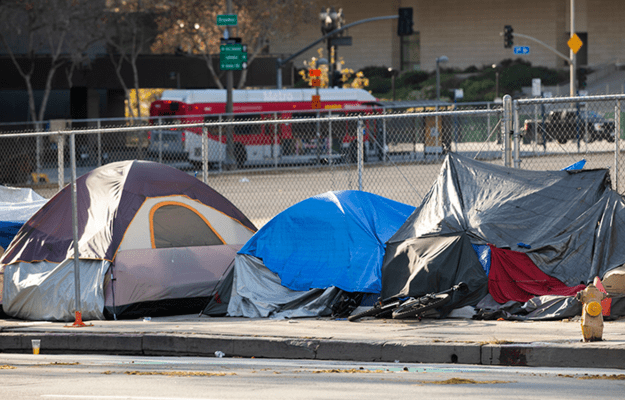
Q&A with Katherine O’Regan on Evidence, Policy, & Opportunity
Katherine M. O’Regan is the assistant secretary for policy development and research at the U.S. Department of Housing and Urban Development (HUD). She spearheads policy research and implementation to help improve housing supply and community life through surveys, demonstrations, program evaluations, and best practices. O’Regan, who holds a PhD in economics from the University of California, Berkeley, is a faculty member of the Yale School of Management.
How Housing Matters recently spoke with O’Regan about her work. Her comments were edited for length and clarity.
How Housing Matters: Recent research details the important impact that neighborhoods can have on upward economic mobility. How is HUD both informing that research and applying it in policy development?
Kathy O’Regan: The important findings of [economics professor] Raj Chetty of Harvard—that every year of exposure to a better environment improves a child’s chances of success—are based on a demonstration that was funded and run by HUD’s “Moving to Opportunity” (MTO). It tested a theory about providing vouchers to existing public housing families who wanted to move, looking at the outcomes when they did move. The HUD MTO demonstration began in 1994 and lasted ten years; Chetty’s work was released in 2013.
There were two parts to it. One, it was a voucher experiment that limited the neighborhoods that voucher holders could move to, so that we could encourage and in some sense require that they move to low-poverty neighborhoods. That whole body of evidence is a surprising—some would say a disappointing—result. We didn’t see changes in school performance for the kids in families that were given the vouchers, and there was no economic impact for the parents in those households.
Second, the Chetty work took the data and matched [them] to IRS data, then followed a much longer time horizon than you typically would in a demonstration. It found that children exposed to low-poverty neighborhoods for a sustainable time realized important positive effects in a range of adult outcomes.
So, HUD both funded the original demonstration and then made the data available, which we always do, to other researchers who would like to access [them] and continue the research. That really is the role of policy development and research here at HUD: helping build knowledge in the field for better policy development and implementation.
HHM: What’s next for that research?
O’Regan: The research has given us better causal evidence. In thinking about policy leaps, you want to have very good evidence, not just beliefs. It also has spurred many conversations—both inside and outside of HUD—to focus on the immediate policy front. So, if places really matter in terms of outcomes for kids, then providing neighborhoods of opportunity really is a key way in which we can accomplish our goals. We have to both improve the places where low-income families live and improve the options that families have for getting to low-poverty, high-opportunity neighborhoods.
HHM: What misconceptions do people have about these types of HUD efforts?
O’Regan: Sometimes people look at the MTO demonstration and think it’s all about families moving. But it’s not. We serve a quarter of the households that are in need, and half of our programs are place-based, so we don’t want to narrow the policy options to just thinking about increasing mobility. We also really want to focus on better investments in place.
And in the policy conversations, we address the reality of where we are: in a resource-constrained time, which is pushing us to focus on potentially budget-neutral ways of using existing resources or changing our own rules and regulations to increase opportunities.
HHM: A recent Urban Institute report found that there just won’t be enough rentals or for-purchase homes for everyone who needs a place to live. If the United States aims to create a safe living environment for everyone, how do we get there amid reports like this?
O’Regan: The Urban Institute report highlighted some forward-looking trends, such as the big demographic shifts and what they mean for housing markets. One part of that shift is recognizing the increased need for rental housing, where we already have an affordability crisis. We need to create more and to recognize the loss of affordable housing we see every year, which makes it difficult to have an adequate supply.
HUD is a big player in subsidized stock. We lose 10,000 units of public housing a year because of a $26 billion backlog of capital investment needed for our public housing stock. One innovation to address that is the rental assistance demonstration (RAD), a cost-neutral program that does not increase HUD’s budget, but simply shifts units from public housing programs to the voucher program. This means that providers can leverage the private capital markets to make capital improvements. The number of units eligible for conversion was recently raised to 185,000.
We’re going to prioritize RAD applications that leverage the most for the public housing stock and for the communities where they’re embedded.
HHM: How well is the United States doing when it comes to finding out what families want?
O’Regan: There is a tendency in social policy, not just in housing, to look for the “program that works” and then say that’s the thing that every single person should do or every single place should have. That’s been a disaster. It is a bad, bad design for good policy outcomes.
What you really want to do is take something that’s more like the medical approach, which is to ask for which patient is a type of medicine a good choice. We should be opening up options. This really should not be about finding “one thing.”
HHM: How do you make that happen in practice?
O’Regan: You would hope that a choice truly is a choice that’s tailored to the circumstances of the family. It’s a conversation rather than a mandate. It has to be done that way, otherwise we could have all the best intentions while doing something that’s good for one subset of households, but forcing something on another set of households that undermines what’s actually best for them.


